The influence and promise of Twitter is only now starting to materialize. Everything that occurred prior to Chirp has lead us to this moment and as such, is almost worthy of categorization as BC (Before Chirp). Everything that happens now, is almost symbolic of a new movement (AC, After Chirp) and as such, it essentially starts a new chapter in the evolution of Twitter.
To truly capture the State and Future of Twitter and all that was revealed during its first official conference, requires additional time and space. In Part One, we examined the sociological impact of Twitter on society, the true size of the network, as well as equally exploring its challenges and opportunities. In Part Two, we’ll review and interpret streams, interest graphs, and Twitters new advertising platform.
Streams Define the New Web
At the focal point of the entire event wasn’t just the developer community; the real beneficiary of all that was introduced, was us, as users as well as individuals soon to be introduced to Twitter. We took center stage as information and details of the “new” Twitter visualized new realities and brought the future of our experiences to life, today.
As Chris Messina, Kevin Marks, Stowe Boyd and others have long signaled, the Web is becoming less about pages and more about streams. Our behavior on the Web today places the power of content discovery and consumption firmly in our grasp. We decide who we follow. We choose which links are worthy of clicking. We determine the information that’s worth reading and more important, worthy of sharing.
The feeds to which we subscribe, channel activities of those we follow in our social graph funnel into the streams that flow through attention dashboards, TweetDeck, Seesmic, HootSuite, PeopleBrowsr, et al. The attention dashboard is how we learn. It introduces us to new discoveries. We’re gifted the insight to see what moves and inspires those we follow. It is also where we earn relevance and hopefully prominence, as what we share in turn, determines its visibility, engagement, and reaction within the attention dashboards and ultimately the streams of those who follow us and who follow them.
The Ties that Bind: Interest Graphs
Social networking is evolving beyond the mere connections to other individuals. We are forming contextual networks by linking to those we know as well as the people we’d like to know. These direct and indirect connections introduce value to our routines, aspirations, and missions from a distance. The most fascinating aspects of contextual relationships is that they mirror our patterns of behavior in real life, however, the interactions we form and cultivate online cast traceable imprints and they define our actions, interests, and alliances more effectively than we may realize.
As we are complex creatures, we are captivated by an incalculable amount of pursuits. While we may follow and are in turn followed by many, the inbound and outbound relevant networks we consciously and unknowingly cultivate expand, contract and reshape based on keywords of interest.
In the era of the real-time social Web, there are already tools in existence with many more to appear that can immediately analyze online activity to summarize your interests and the social graphs formed as a result.
As we learned at Chirp, Twitter’s COO Dick Costolo refers to the idea of themed connections as an interest graph, the linkages of Twitter users who form connections and host conversations around common subjects. It is these inbound and outbound relevant networks that lay the foundation for Twitter’s monetization strategies.
Twitter’s Business Model: Relevance
Prior to the dawn of Chirp, Twitter introduced Promoted Tweets. Much like the ads that appear in Google Search, Promoted Tweets will appear at the top of Twitter search results and the company promises that they will be “useful to you.”
Among the first to adopt Promoted Tweets include Best Buy, Bravo, Red Bull, Sony Pictures, Starbucks, and Virgin America—with more to come.

Promoted Tweets are clearly labeled as such, but their promise lies in the ability to look and act similar to regular Tweets, meaning that they retain all the functionality of a regular Tweet including replying, Retweeting, and favoriting.
Perhaps the greatest value in Promoted Tweets is their ability to remain atop the stream of relevance. While each of the initial companies experimenting with Promoted Tweets maintain Twitter accounts, the volume of content flying through the attention dashboards of followers inherently buries the most attractive of offers posted by any business.
According to Twitter, Promoted Tweets will also be timely. As much of Twitter’s activity takes places outside of the dotcom, developers can choose whether or not Promoted Tweets are integrated in their apps.
As the company defines, the connection between Promoted Tweets and individual interests provides a powerful means of delivering information relevant to you at the moment, in real-time.
Brands aspire to earn attention and reactions in the streams of both social and interest graphs. If consumers share information related to the brand, earned media then becomes the word of mouth catalyst that then spreads the information across the Web. Organic Tweets that mention companies and their services, offers, value, etc., are considered earned media. Promoted Tweets create a hybrid of paid and earned media, something I refer to as sponsored media. Promoted Tweets begin as paid media and transform into earned media with every ReTweet.
Costolo shared the love, positioning the new revenue model as helping “the entire ecosystem making money.” Therefore, the company is splitting promoted tweets revenue 50-50 with distribution partners.
Relevance and Resonance
Promoted Tweets are perhaps less controversial than what the immediate future beholds. Today, Promoted Tweets will appear only in search results. Once the system and the culture of the community is tested and immersed, paid Tweets will then enter the streams that connect interest graphs to topics of interest. Again, the value to the advertiser is that these Tweets will appear in the streams of individuals who have repeatedly demonstrated and communicated their interests through their actions and reactions as representative in the Tweet history.
However, with opportunity, new challenges face advertisers. Promoted Tweets force relevance into their campaigns in order to trigger positive responses and ultimately word of mouth and measurable activity. Twitter is not only changing communications between users, it also represents the impetus for contextualizing and humanizing advertising, in real-time. Without the ability to connect to and inspire people, campaigns will fail miserably. Those that appeal to the emotions and interests of consumers will spark a social effect that reverberates across the social graph online and eventually into the real world.
Dick Costolo shared a tangible example, “If I tweet a lot about coffee, I could be a great target for Starbucks ads, for example.” And, it is Starbucks that appears to fully embrace the notion of the real-time interest graph.
Not only is Starbucks among the initial adopters of Promoted Tweets, the company is also running an innovative outreach program with influence measurement startup Klout. Klout provides everyday marketers with the ability to identify influencers who actively tweet about related topics and also maintain a level of measurable stature with Twitter. These influencers were recently offered a free sample of Starbucks Pike Place Roast because of their earned authority on the subject of coffee.
In many ways, Twitter’s Promoted Tweets mirrors this strategy, but now extends it from individual influencers to anyone interested in coffee, not necessary influential on the subject.
Two words that were repeated throughout the conference, resonance and relevance, underscored Twitter’s commitment to creating an advertising platform that would earn the support of the community.
As Costolo noted, “Tweets that don’t resonate with users will disappear.”
Resonance is the reinforcement or prolongation of social objects. A Tweet, whether it’s paid or earned, represents a social object as its introduction and exposure possesses the ability to spark conversations. The extent and volume however, are determined by relevance and the shareability of the social object however.
Twitter is using resonance as a metric as it measures all the different ways people engage with Tweets and as such, produces a resonance score that determines the effectiveness and overall lifespan of Promoted Tweets. Resonance examines the visibility of a Tweet and actions surrounding them including how often they’re retweeted, favorited, etc.
In addition to developers, Twitter seems to truly believe that the user experience is the source of Twitter’s past and future. As such, it is the experience that is also the inspiration behind Promoted Tweets. Initially these paid opportunities will be based on a CPM (cost per 1,000 impressions or 1,000 qualified individuals exposed to the Tweet). What caught my attention however, is that as Twitter learns about the performance, accuracy, and possibilities orbiting resonance as a metric, the cost model will migrate from CPM to a ROI model…yes, Return on Investment. Details on the ROI model weren’t discussed, but I can assure you, anything that is introduced into the real-time Web triggers a response, even if that response is nothing. Advertisers will need to not only get creative, but also ensure that Promoted Tweets are both actionable, Retweetable, and, let me say that again, AND, advantageous.
Twitter’s metric could be applied to all forms of social media, from Twitter advertising to Tweets produced by its users to updates and postings across the entire social Web. Without relevance, we cannot trigger resonance, and without resonance, we cannot establish significance.
In social media, we earn the relationships, responses, and trust we deserve.
Previously: Part One – Twitter, by the numbers.
Next: Part Three – A look at the new features, technologies, and partnerships unveiled at Chirp.
Connect with Brian Solis on Twitter, LinkedIn, Tumblr, Google Buzz, Facebook
—
Please consider reading my brand new book, Engage!

—
Get Putting the Public Back in Public Relations and The Conversation Prism:

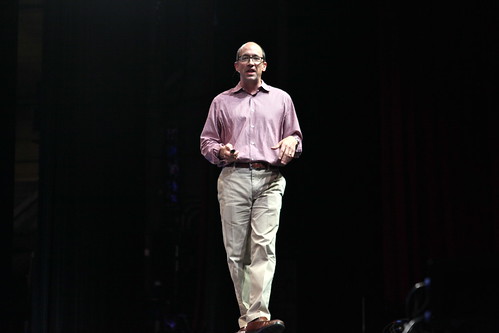
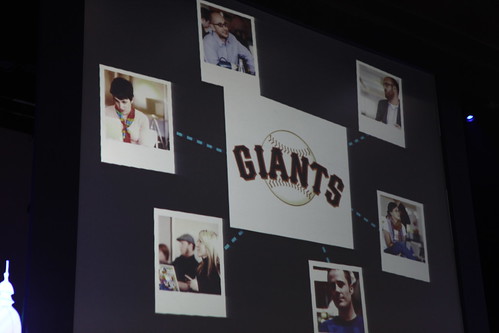
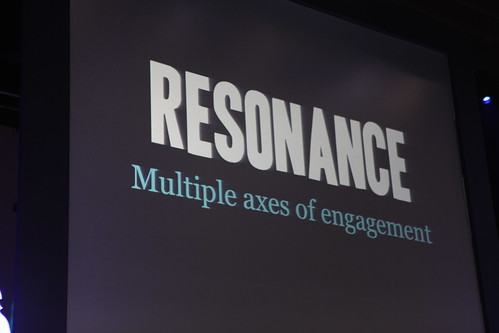
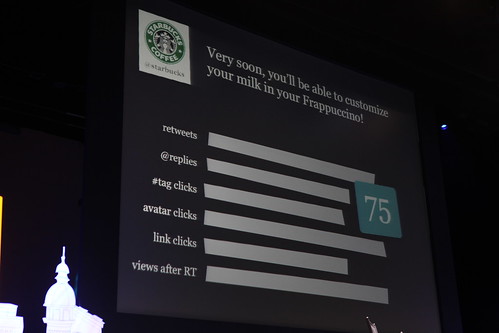



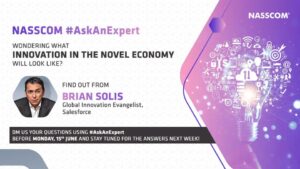



It seems to me from your description of the promoted tweets that this is a step towards the semantic web? With Twitter 'understanding' you, via what you tweet, then matching the correct adverts aim at you, that are not intrusive and not based on your favourite films, books etc. but from real conversations. Basically, I think it is pretty exciting!
David, yes…exactly. We expect to hear that today at Facebook's F8 as well.
To be honest, if it's straight behavioral (by recently used keyword) targeting, users tend to be resentful. They can easily put 2 + 2 together, and unless the offer is extremely valuable, is likely ignored. Here is an idea on how this could be avoided (details included in comments, need to expand):
http://alexschleber.amplify.com/2010/04/19/key-…
As you say in your comment, when it enters the stream it will get better, I think they will do something special with that. Yes they will have to rely on keywords in your comments, but by tracking conversations and using intelligence rather than 'that guy tweeted coffee, advertise to him' when the person may have tweeted 'i hate coffee'. I think it will be sophisticated and is a step towards the semantic web where what we say is understood.
Let's hope so. I really would have preferred Super-Tweets, but I'll give Twitter the benefit of the doubt until we see the Sponsored Tweets in the wild. If they'll end up doing it in a rather pedestrian fashion, I've got to say: What took so long?
Brian,
I have really appreciated both parts of your analysis of the State & Future of Twitter 2010.
I wonder if you have in mind sharing additional analysis that would include perspectives on Twiiter’s new annotations feature. They plan to let developers experiment with the possibilities of appending some 2K of metadata in tweet payloads and launch the feature in a couple months.
I am awestruck by the potential of developers applying Linked Data / Semantic Web schema and using RDF/OWL in Twitter annotations. It could massively scale search effectiveness and distribution opportunities while allowing sophisticated on-the-fly analysis of Twitter's firehose & other feeds.
The Twitter ecosystem is particularly suited to applying principles of the Semantic Web in that machine interpolated meaning and “Twitter Resonance” could be continually refined the more humans tweet & retweet about the same and related topics (resolved by semantic entity detection; coupled with author, location, hashes, platform, temporal and other information.
Marshall Kirkpatrick @marshallk, suggested 4/19/01 that Twitter intends to leave the annotation classification system to be determined by the market. http://bit.ly/csK8Od
@ZacharyCohen today opined today, “that social media, in its purest form, is our generations’ destiny hammer. http://bit.ly/9TwZ2T
I suspect the conversation on how Twitter annotation metadata standards might best serve potential services is just beginning. I hope to find your thoughtful voice joining others in this rare opportunity to help shape an attribute of a powerful social media tool.
It's like our baby Twitter graduated college and learned how to start making money in the real world! I'm so proud!
I have been all over Twitter's plans to make money since '06. This is exciting for them because there is so much they can do with this from a biz dev perspective. What's great is that they still maintain the value of it because, from the way the preach resonance, it sounds like “survival of the fittest” for tweets. If people are not into your promo, twitter doesn't want it either.
If you still have questions about what promotional tweets are and what they mean for marketers, here's a great straightforward article on the “Top 10 Questions People are Asking About Promotional Tweets” – very helpful so please pass along!
http://bit.ly/cnh95L
http://bit.ly/cnh95L
Great post, Brian. A really useful analysis of how Twitter is redefining the presence of advertising within social networks. the smartest thing they have done is built in their own life cycle so unwarranted or unwanted promotional tweets can die. when brands mirror the organic nature of community conversations they all themselves to thrive in the ecosystem. Your post is as insightful as ever. Thanks, Brian.
Simon! May I have my iPad back please? 🙂 Thanks again Simon. Well said…
I'm not easily impressed but I have really appreciated the insightful writing you've provided on parts 1 and 2. I like the way you think and appreciate the deeper sociological and business views you've explored in these posts. Excellent job on these pieces, Brian! I think I will go buy your book : )
Mark, thank you…I appreciate it.
I get asked all the time: What is the value of Twitter? I have our whole PR grad program following you because I always feel smarter after I've read your thoughtful “lessons”. Thank you, Brian.
Great post. Thank you for bringing Chirp goodness to the interested social sphere. Lots to pass along from this write-up.
I love “without the ability to connect to and inspire people, campaigns will fail miserably.” I think I'm going to put this up on my wall at work so that everyone knows my stance. Don't come talk to me about social media unless you and the client are ready to do these two things. I think in the same way Twitter is changing the way we communicate, the emergence of social media agencies and departments are changing the way we “advertise.” Cheers to you and more social thinkers like you.
Absolutely agree Brian that advertisers will have to get more creative when it comes to using promoted tweets. Things such as brushing up on your copy, making it much more condensed with better, more “to the point” words, having a good clear call to action, and all doing it without being perceived as some salesperson.
At the end of the day, we all hate to be sold. Now we're in an age where the advertising that truly works is one that we genuinely want to connect with, something far more meaningful.
Hey thanks for sharing with us (all who couldn't come) all the Twitter goodness. Now, this is exciting, the marketing relevance of twitter. But I will also echo the concerns made by the others. Now companies have to be more creative with their one-liners. Promos and discounts! Always catches attention. So since this works pretty much like adwords ( http://sn.im/vlnzs ) I'm guessing same strats apply. I guess we'll all wait and see.